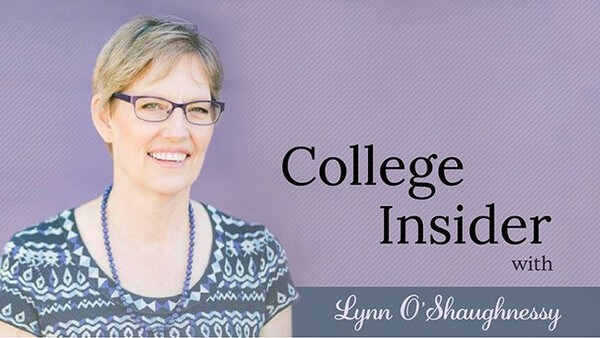Hate Your ACT or SAT Score? Apply to a Test-Optional College

Every year, one of the most rigorous parts of the college application process happens on Saturday mornings, the SAT and ACT test. Many students, however, are disappointed with their scores. If that happens to you, apply to test-optional colleges and universities.
About 925 colleges allow applicants to avoid divulging their ACT or SAT test scores during the admissions process. Keeping your scores secret can help you get into more selective schools. Here are six things you should know about test-optional admissions:
1. Test-optional opportunities are increasing.
The number of colleges that offer test-optional admissions continues to grow. In fact, about one or two institutions a week have made the switch, according to FairTest: The National Center for Fair and Open Testing, a non-profit that advocates against the tests.
These numbers, however, are somewhat misleading because they include many institutions that have non-selective or open admissions. At institutions like these, students routinely are accepted even if their test scores are poor. Test-optional institutions also include for-profit colleges. Among more selective institutions, liberal arts colleges embrace the trend.
About half of the top 100 liberal arts colleges ranked by U.S. News & World Report are test-optional. Institutions that are test-flexible allow applicants to substitute scores from other tests such as SAT Subject Tests or Advanced Placement tests.
In order, here are the most highly ranked liberal arts colleges that are test optional:
- Bowdoin College
- Smith College
- Wesleyan University
- Bates College
- Bryn Mawr College
- College of the Holy Cross
- Pitzer College
- Mount Holyoke College
- Skidmore College
- Trinity College
- Union College
- Dickinson College
Also ranked by the most selective are the four liberal arts colleges that are test-flexible:
- Middlebury College
- Colby College
- Hamilton College
- Colorado College
2. Test-optional admissions aren’t common at prestigious universities.
Universities are more likely to rely on a student’s test scores, grade point averages and class rank. In contrast, colleges, which are much smaller than universities, are more likely to evaluate applicants holistically, so ignoring test scores isn’t as critical.
The most highly rated research university to implement a test-optional admission policy is Wake Forest University in North Carolina. The other highly-ranked universities that are test optional are Brandeis University, George Washington University, Worcester Polytechnic Institute and American University.
The three research universities that are test-flexible are University of Rochester, New York University and Drexel University.
3. It’s easy to locate test-optional institutions.
A simple way to find test-optional colleges is to head to Fairtest. The non-profit maintains a database of all test-optional colleges. It also published a list of more than 265 top tier colleges, measured by U.S. News & World Report, that maintain test-optional and test-flexible policies.
4. When in doubt about going test-optional, ask the college.
One factor when considering the test-optional route is money. At some institutions, applicants might not be eligible for merit scholarships if they don’t submit their test scores. Some institutions might reserve top awards to test submitters.
If you plan to sit on your scores, you need to be competitive with your GPA and other admission qualifications. A weak candidate who doesn’t submit scores will not enjoy an advantage any more than someone with the same GPA and ACT/SAT results.
Test-optional colleges are best for applicants whose test scores are not reflective of their academic performance. If you just had a bad day, you might consider retaking the test, perhaps after an intense test-prep class. The best way to decide is to contact an admissions representative.
5. Be skeptical about published test scores.
When comparing your test scores with previous average scores at a test-optional college, keep in mind that these scores are probably inflated. That’s because almost all colleges only calculate the scores they receive. Obviously, the students who don’t turn in their test scores have lower scores that will bring down the college average.
6. Understand why colleges embrace test-optional.
The most popular reason that college administrators cite for implementing test-optional policies is to attract a more diverse student body. Overall, how students do on the SAT and ACT is highly correlated with income.
So if an institution eliminates the testing requirement, minority and first-generation students should enjoy a better chance of getting into these more selective schools. Colleges and universities also embrace test-optional policies to help boost their recruiting efforts and make themselves look more selective.
A paper published in The Journal of College Admissions suggested colleges that switch to a test-optional policy see an immediate 10-20% hike in applications. Generating that spike in applications normally would cost up to hundreds of thousands of dollars in marketing.
Newer, peer-reviewed research by Andrew Belasco, the CEO of College Transitions, a college admissions consulting firm, suggests that the diversity argument doesn’t necessarily hold up. Belasco looked at 180 liberal arts colleges that included 32 test-optional institutions. The test-optional colleges turned out to be no more diverse than those that required the standardized tests.
“Our findings suggest that test-optional admissions policies as a whole have done little to meet their manifest goals of expanding educational opportunity for low-income and minority students,” Belasco said.
“However, we find evidence that test-optional policies fulfill a latent function of increasing the perceived selectivity and status of these institutions. In doing so, these policies may serve to reproduce and maintain the current social structure and its inequalities within U.S. higher education.”
Lynn O’Shaughnessy is a best-selling author, speaker and journalist. Her book, The College Solution: A Guide for Everyone Looking for the Right School at the Right Price, is available on Amazon.com.